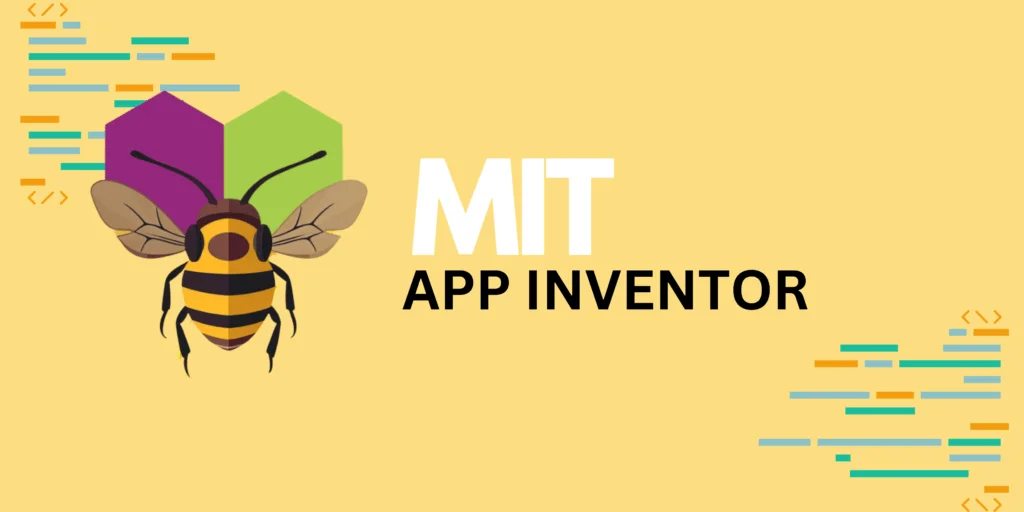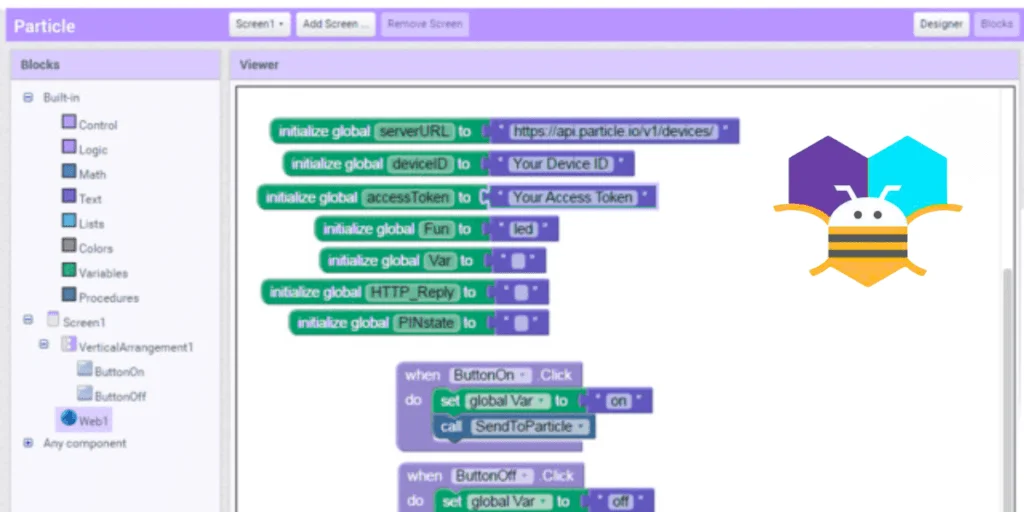Mobile app development has transitioned from a specialized skill to a widespread tool for innovation and creativity. At the forefront of this transformation is MIT’s App Inventor, a platform that has democratized the creation of mobile applications.
Over a decade after its inception, App Inventor in Mobile App has achieved remarkable milestones, including registering its 20 million users and launching its 100 million projects. These achievements underscore the platform’s profound impact on the global tech landscape.
Initially conceived during Hal Abelson’s sabbatical at Google, App Inventor was developed as a response to the restrictive policies of Apple’s App Store, which limited software development to a narrow audience.
Recognizing the need for a more inclusive approach, Abelson and his team envisioned a tool that would empower young learners and educators to explore mobile app development without needing advanced coding skills.
By adopting a block-based programming language, App Inventor made it possible for users to visually snap together pre-made “blocks” of code, simplifying the development process and making it accessible to a broader audience.
Today, hosted by MIT and continually evolving, App Inventor supports basic app creation and experiments with artificial intelligence, broadening its scope and enhancing its capabilities.
App Inventor in Mobile App
The origins of App Inventor trace back to a pivotal moment in mobile technology history. In June 2007, Apple launched the iPhone, introducing a new paradigm for mobile devices and establishing a controlled ecosystem through its App Store.
This “walled garden” approach allowed only Apple-approved applications, presenting a significant barrier to educational use and broader developer engagement.
Recognizing the limitations this posed, particularly in academic settings, MIT professor Hal Abelson, then on sabbatical at Google, saw an opportunity to create a more open and accessible platform.
During his time at Google, as the tech giant explored how to counter Apple’s burgeoning dominance in the mobile market, Abelson drew inspiration from educational software like Logo and Scratch, designed to teach programming through intuitive and visual methods.
This inspiration led to the development of what was initially called “Young Android,” a platform that enabled users, especially young learners, to create mobile applications using a simple, block-based programming language.
As it was soon renamed, Google App Inventor was groundbreaking for its time. It allowed users to visually assemble applications using pre-made code blocks, eliminating the need to learn complex coding syntax.

This approach significantly lowered the barriers to mobile app development, making it accessible to a non-technical audience and introducing countless students and educators to the potential of mobile technology.
The collaboration between Google and Abelson was crucial. Google provided the technical infrastructure and support needed to launch and scale the platform.
This partnership highlighted a shared commitment to democratizing technology and fostering an environment where anyone could create and innovate.
App Inventor’s Development
App Inventor’s journey from an innovative idea to a globally influential educational tool highlights its profound impact on technology and education.
Initially launched as a Google project, App Inventor was developed to make mobile app creation accessible to non-technical users, especially young students and educators.
This initiative quickly gained traction, reflecting a growing demand for more inclusive and engaging educational tools.
MIT’s Hal Abelson and Google software engineer Mark Friedman spearheaded the development of App Inventor. They focused on creating a user-friendly platform that leveraged a blocks-based visual programming language inspired by Scratch.
This approach enabled users to drag and drop pre-made code blocks to build functional mobile apps, simplifying the programming process drastically.
The immediate appeal of App Inventor was its accessibility. Removing the complexities associated with traditional coding allowed a much younger demographic to engage with technology creatively.
Over 70,000 teachers worldwide were using App Inventor in their classrooms within a short period, impacting hundreds of thousands of students.
This widespread adoption underscored the platform’s potential to transform technology education by making it hands-on, engaging, and broadly accessible.
Some early applications developed using App Inventor showcased its versatility and potential for social impact. A notable example is “Discardious,” an app created by teenage girls in Nigeria to help individuals and businesses manage waste more effectively in areas with unreliable disposal services.
This project highlighted how App Inventor could be used to address real-world problems and empower users in underserved communities.
Despite its success, the initial phase of App Inventor faced challenges, particularly regarding sustainability, as Google reconsidered its long-term involvement. Around 2010, Google agreed to transfer App Inventor to MIT to ensure the platform’s continuity.
This transition required significant effort to rebuild the platform without Google’s proprietary software while maintaining the same level of functionality and accessibility.
The transfer to MIT marked a new chapter for App Inventor that continued its legacy and expanded its capabilities. Integrating artificial intelligence has been a recent focus, enhancing the platform’s utility and enabling users to develop more sophisticated applications.
Projects like “Brazilian XôDengue,” which helps identify mosquito larvae that may carry the dengue virus, exemplify how AI can amplify the impact of applications created with App Inventor.
App Inventor’s development and sustained impact illustrate a successful endeavour in democratizing technology.
By providing an accessible, engaging platform, App Inventor has educated millions and inspired them to innovate and solve practical problems, significantly broadening the scope of who can participate in technology creation.
Transition to MIT
The transition of App Inventor from Google to MIT in 2010 was a critical juncture in the platform’s history, pivotal for its long-term sustainability and continued expansion.
This move was orchestrated to ensure that App Inventor remained a free and accessible resource for educators and students worldwide, even as Google began to reevaluate its direct involvement in the project.
The transition process involved significant technical and logistical challenges. Google’s proprietary software, integral to App Inventor’s operation, must be replaced with open-source alternatives.
This required extensive redevelopment to ensure the platform continued to function seamlessly and support its growing user base. The task was formidable, necessitating substantial effort from both Google and MIT teams to replicate the functionality and user experience that App Inventor users had come to rely on.
MIT’s commitment to the project was evident from the outset. Key figures such as Hal Abelson, who had been instrumental in creating App Inventor, played a crucial role in guiding the transition.
MIT also allocated resources to expand the platform’s capabilities, integrate modern web technologies, and enhance scalability to accommodate increasing users and projects.
MIT’s enterprise architect, Jeffrey Schiller, was particularly influential during this phase. He led efforts to integrate the platform more deeply with web browsers and improve connectivity options, such as adding WiFi support.
This reduced the need for physical connections between devices, thus broadening the platform’s accessibility.

To further ensure the sustainability of App Inventor, the App Inventor Foundation was established in 2022. This organization was designed to secure funding, manage community relations, and drive platform adoption.
The foundation plays a critical role in maintaining the platform as a free resource while also fostering a vibrant community of users who contribute to its development and expansion.
The foundation, under the leadership of executive director Natalie Lao, has been pivotal in aligning App Inventor’s growth with broader educational goals, including the integration of AI technologies. This has allowed App Inventor to remain relevant and valuable in a rapidly evolving tech landscape.
MIT’s RAISE Initiative, which focuses on Responsible AI for Social Empowerment and Education, has incorporated App Inventor into its curriculum, ensuring that it continues to be an integral part of technology education.
App Inventor’s transition to MIT safeguarded its future and reinforced its mission to democratize mobile app development.
Integration of AI Reach
Integrating Artificial Intelligence into App Inventor marks a significant evolution in the platform’s capabilities, broadening its educational impact and empowering users to tackle more complex and impactful projects.
As App Inventor continues to evolve under MIT’s stewardship, its focus has expanded to teach basic programming and introduce users to the cutting-edge field of AI, aligning with broader educational trends and needs.
App Inventor allows users to create applications that are not only functional but also intelligent. This enhancement provides tools for directly incorporating machine learning models and AI-driven data analysis into apps.
App Inventor’s integration into the MIT RAISE Initiative—Responsible AI for Social Empowerment and Education—has further solidified its role in AI education.
The initiative supports various projects that use App Inventor as a foundational tool for teaching AI concepts. This includes the Global AI Hackathon, which encourages participants to use App Inventor to develop AI tools focused on themes such as Climate & Sustainability and Health & Wellness.

App Inventor’s adaptability makes it a valuable resource for various educational settings, from primary schools to universities. It’s particularly effective in environments that benefit from low-cost and accessible technology solutions.
By enabling students to create apps that can interact with the natural world through sensors and data, App Inventor bridges theoretical knowledge and practical application, a crucial aspect of STEM education.
App Inventor’s expansive user community, including educators, students, and hobbyists from around the world, plays a critical role in its educational reach.
This community uses the platform and contributes to its development, providing feedback, sharing lessons, and even developing new features.
The App Inventor Foundation supports this community by ensuring the platform remains free and fostering a culture of collaboration and innovation.
The integration of AI into App Inventor is expected to open up even more possibilities for users. The focus is on technological enhancement and ensuring that these advances remain aligned with App Inventor’s core mission to democratize technology.
Initiatives led by leaders like Natalie Lao, who emphasizes equitable access to educational resources, ensure that the advancements in AI are accessible to all, regardless of their background or resources.
Final thoughts
App Inventor, since its inception at Google and transition to MIT, has proven to be a remarkable tool in democratizing mobile app development and expanding the educational reach of programming.
As it crosses significant milestones—100 million projects and 20 million users—the platform continues to evolve, integrating advanced technologies such as AI to keep pace with the demands and possibilities of the digital age.
The vision of App Inventor as a block-based, user-friendly platform has enabled countless individuals, especially young learners and educators, to engage with technology in innovative ways.
By simplifying the programming process and removing barriers to entry, App Inventor has fostered a creative and inclusive environment for developing mobile applications.
The future of App Inventor looks promising, with the App Inventor Foundation now at the helm to ensure its sustainability and growth. Under the leadership of Natalie Lao, the foundation is committed to maintaining the core values of App Inventor while embracing new technological advancements.
This includes a strong emphasis on AI education, ensuring that App Inventor remains a leading tool for teaching and learning in an increasingly digital world.
Initiatives like the MIT RAISE Initiative and the upcoming AI and Education Summit highlight the expanding scope of App Inventor, from a tool primarily used in classrooms to a platform that can address global challenges through technology.


